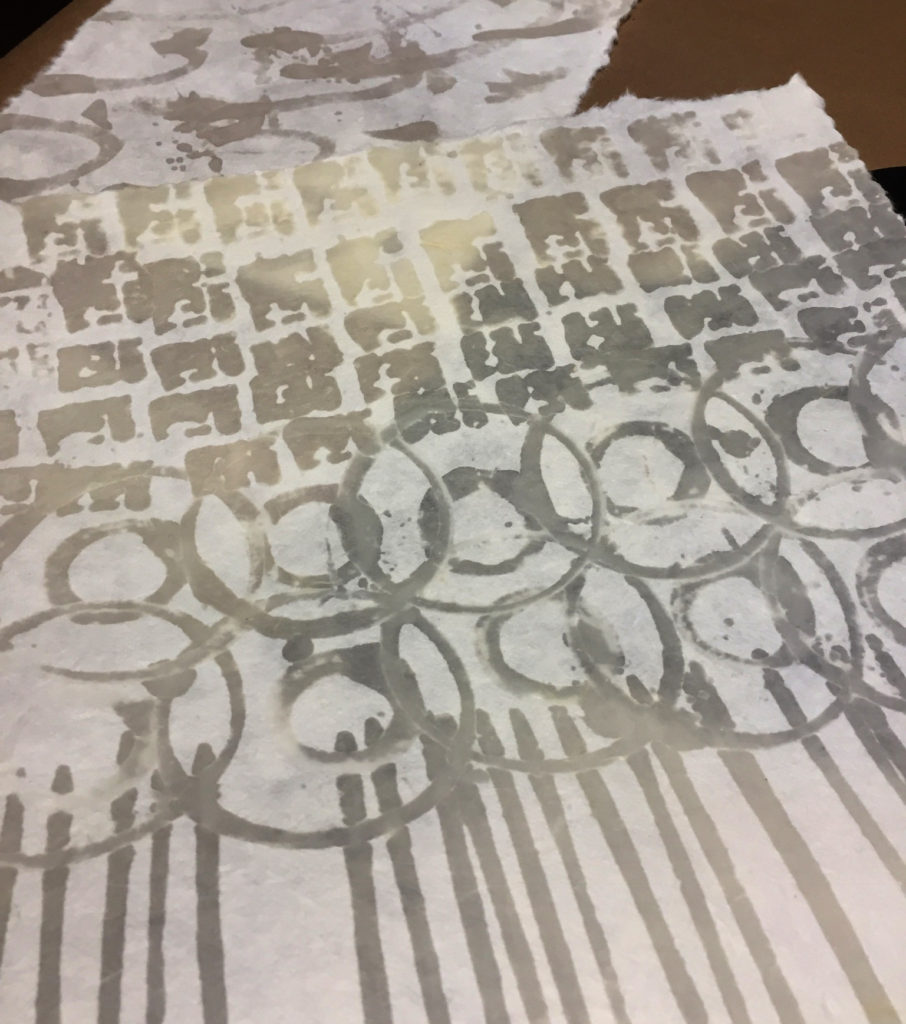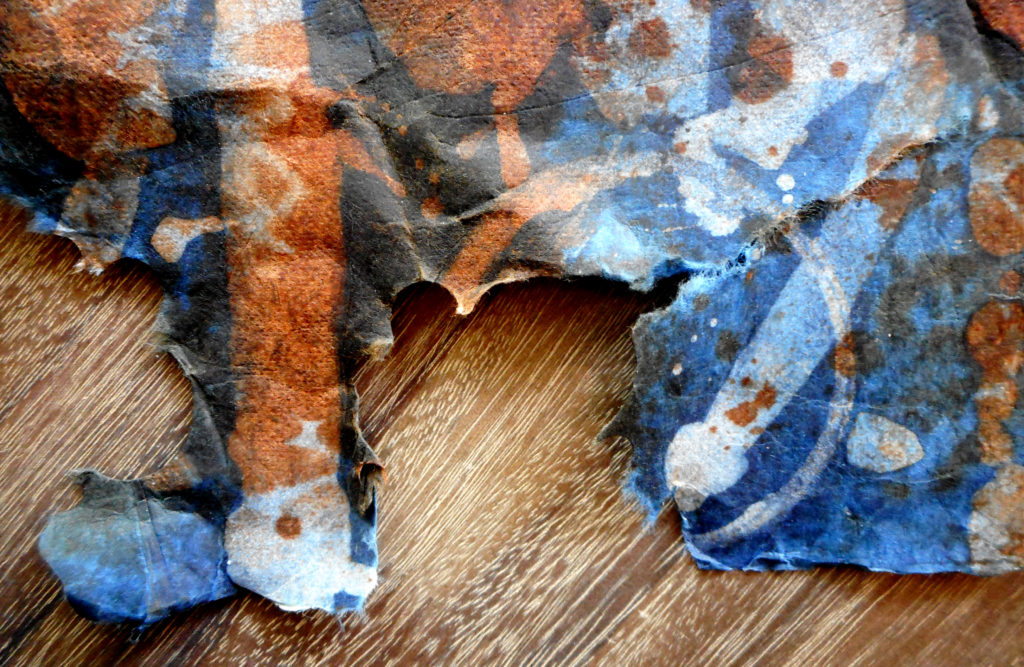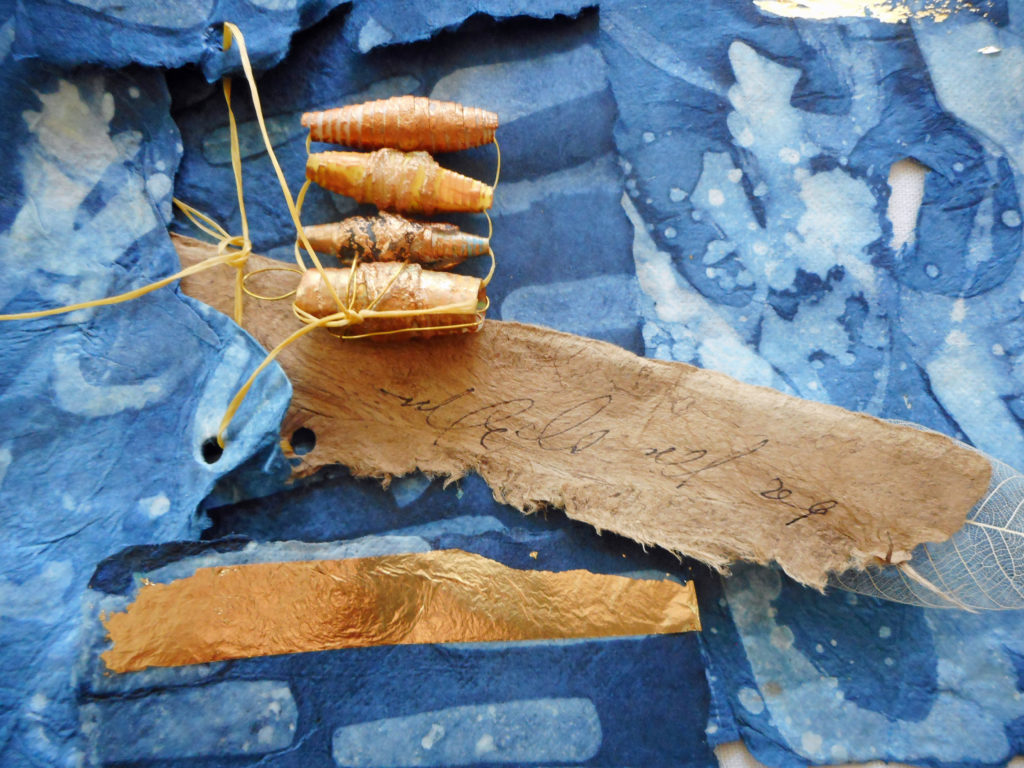
A Vintage indigo-dyed Boro fabric kimono from 20th Century Japan, lovingly patched and preserved
I’ve just finished the three pieces that were inspired by the indigo dyed mulberry paper described in my last post. I had wanted to return to a kimono-like construction, and about halfway through the process of piecing the papers together, I realized that this was much like constructing a vintage indigo Boro kimono.
Boro is a Japanese word meaning “tattered rags” and it’s the term frequently used to describe lovingly patched and repaired cotton bedding and clothing, used much longer than the normal expected life cycle. The beauty of boro fabric is the highly sophisticated sewing and weaving techniques used by the women who made and mended it. The beautiful arrangement of patches and mending stitches was born of necessity and happenstance, and was not planned by the maker.
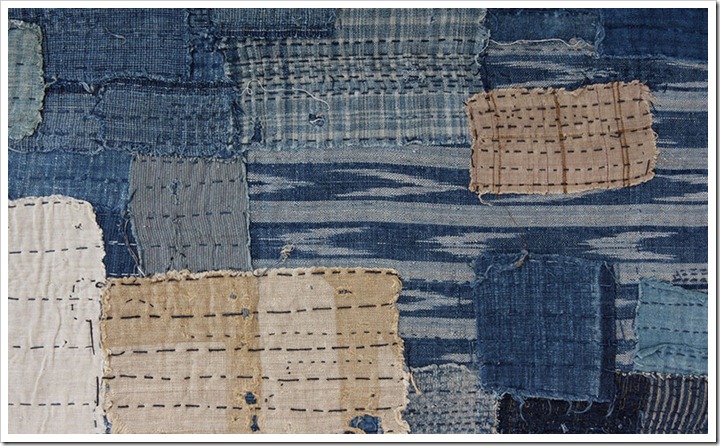
Boro fabric reminiscent of American patchwork quilting
Here’s the first of my three indigo-dyed mulberry paper “Boro” kimonos, below. Each scrap of hand-dyed paper, each beeswax-coated paper bead, played an integral part in the composition.
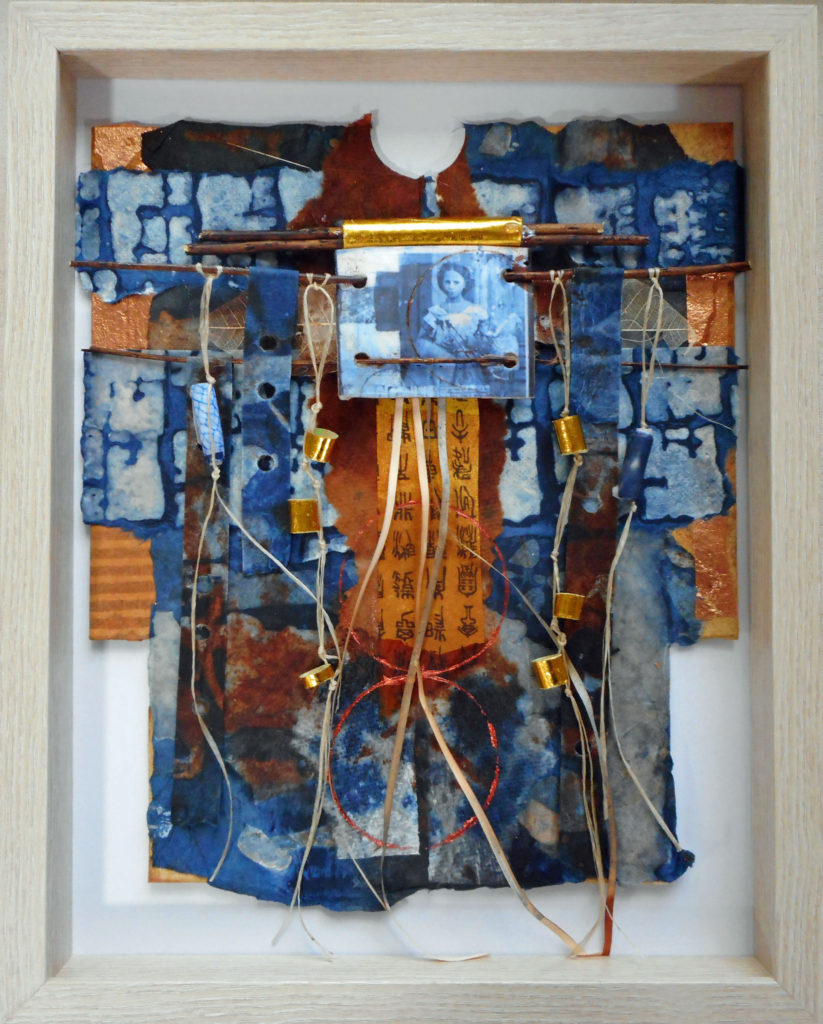
You can see some of the construction details in this close-up. There are sticks woven through dyed and waxed images and paper beads hanging down from waxed linen string.

The second kimono, below, is a bit more formal in composition, but is still constructed from tattered and torn indigo-dyed mulberry paper. I also used a bit of Korean print rice paper which I sprayed with walnut ink in order to give some color contrast – very Boro-like.

In the detail, below, you can see how four of the waxed and gilded paper beads have been double-laced together and then tied into the focal ornament.

All of the pieces are displayed in 11×14″ shadow boxes. I took the glass off to photograph the works, but at the exhibit, they will be covered with glass to protect the collage elements. Everything is adhered, but there is still some movement of string and beads behind the glass when the work is tilted, which is fun
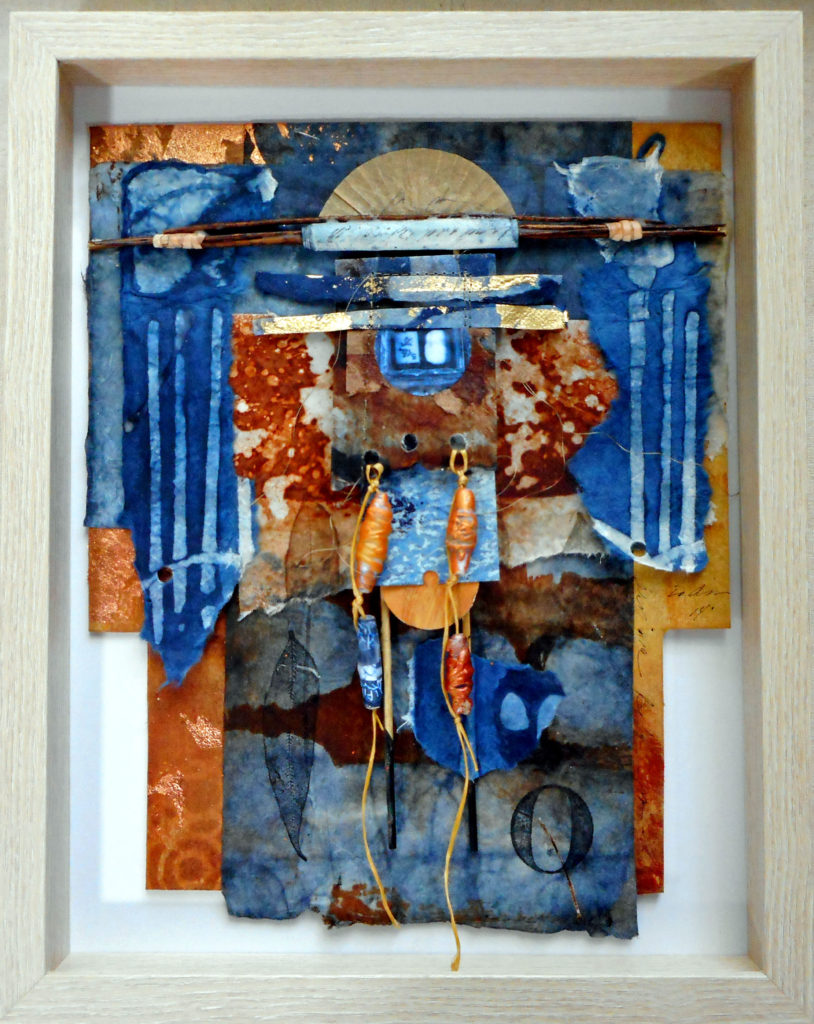
In this last detail, you can see a bit of the rust effect that terra cotta walnut ink made on waxed white mulberry paper. I love that!

In fact, I love each of these three pieces because they reflect the philosophy of Boro, which means “too good to waste.” If you are a collagist, you know what I mean. We hang on to the tiniest of paper scraps, knowing that they will find a place – eventually – that is just right.
If you’d like to know more about Boro, here is a very user-friendly article from the FurugiStar blog. There are some lovely pictures, as well, and an intriguing description of a bodoko, or “life cloth.”
I am so happy about the connection that my little indigo kimono pieces have to the Boro tradition, and I plan to continue to explore this connection in paper and in fiber. More soon!




